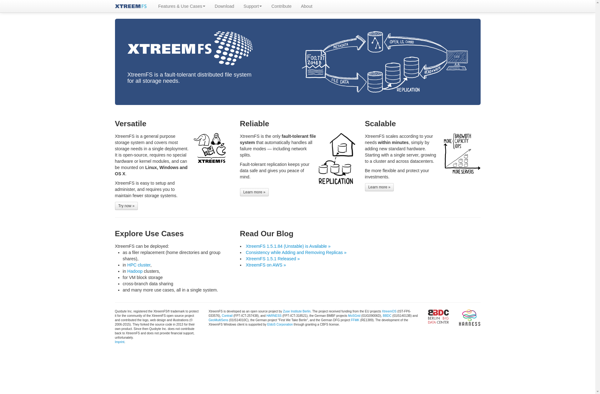BeeGFS

BeeGFS: High-Performance Computing File Systems
Open-source parallel file system designed for HPC environments, improving I/O performance by distributing file data across multiple servers on Linux clusters.
What is BeeGFS?
BeeGFS (short for 'Bee' Grid File System) is an open-source parallel file system designed for high-performance computing (HPC) environments. It runs on Linux clusters and helps improve I/O performance by distributing file data over multiple servers.
Some key characteristics of BeeGFS:
- Designed for large-scale clusters and single Linux workstations
- Stripes data across multiple servers for parallel IO performance
- Provides server high-availability and failover capabilities
- Includes enterprise features like access control lists, storage quotas, and snapshots
- Features efficient data replication and data recovery mechanisms
- Has clients for Linux, Windows, and macOS
- Uses sockets and RDMA for high throughput, low latency
- Interoperable with other file systems via FUSE
BeeGFS benefits HPC environments by enabling much higher IO bandwidth when accessing large files simultaneously from multiple servers. This allows compute clusters to scale more easily by reducing IO bottlenecks. Typical use cases include environments for scientific modeling/simulation, genomic sequencing, machine learning, physics data analysis, and more.
BeeGFS Features
Features
- Parallel file system designed for high performance computing
- Optimized for streaming access to large files
- Supports RDMA network interconnects like InfiniBand
- Automatic load balancing of storage servers
- High availability through transparent failover
Pricing
- Open Source
Pros
Cons
Official Links
Reviews & Ratings
Login to ReviewThe Best BeeGFS Alternatives
Top Network & Admin and File Sharing and other similar apps like BeeGFS
Here are some alternatives to BeeGFS:
Suggest an alternative ❐Linux File Systems for Windows

Ceph

GlusterFS

DiskInternals Linux Reader

XtreemFS

WekaFS

Ext2 Installable File System

DRBD

Lustre

StorPool

MacFUSE

Seaweed FS

MooseFS

LizardFS

Quobyte

FSproxy

Fuse4X

Explore2fs

Ext2/3/4 Filesystem Utilities
